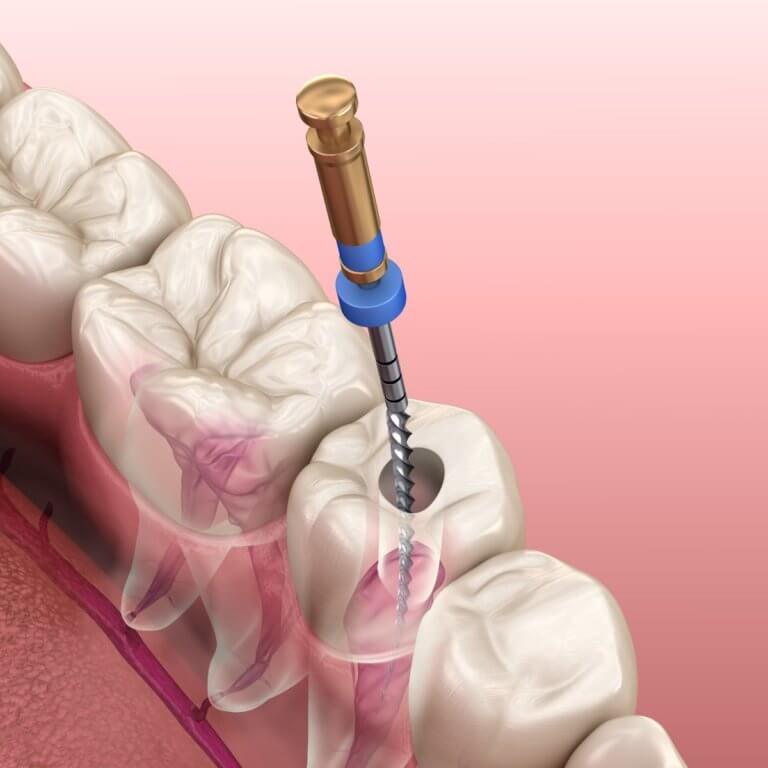Understanding what a root canal procedure is, is the source of many questions in my office. This past week my patient asked me point-blank to explain in detail what was involved in the process.
I had met her briefly on a diagnostic visit and discovered that she had some severe tooth decay below the level of the gum. The decay extended towards the front of the mouth and into the tooth behind the source of the decay. The decay worked its way under two crowns that she had on her lower left side. Due to the extent of the tooth decay or cavities, as we like to call it, she would require the replacement of both crowns. However, one of the crowns had an excessive amount of decay. This decay put a doubt in my mind regarding the feasibility of replacing the crown and saving the tooth. This tooth needed a root canal.
Saving a Tooth With a Root Canal
The need for a root canal procedure alone does not jeopardize the ability to keep the tooth. Just the opposite is more accurate. A root canal is utilized to save a tooth and not lose it. Decay under the gum was the factor that made me wonder whether or not I could keep the tooth in the mouth. Although this makes for an accurate explanation of the situation, it is not where I want to focus this column.
The question of the day is why she needed a root canal and what takes place during the process.
The Decay of the Tooth & Nerves
The decay, our villain in this story, started, at the back end of the tooth and rotted everything in its path. The destructive path included the nerve in the center of this tooth. Sometimes this happens quickly, and the pain is quite intense. Other times, it happens more slowly, and the patient never knows that it is happening. In either event, once the nerve is involved, there is no turning back. It will never heal by itself. The deficient healing process is due in part to the lack of sufficient blood supply to the area to allow proper healing.
Removing the Infected Pulp
A root canal procedure is performed when the pulp which is comprised of nerves and blood vessels in the tooth becomes infected.
For a moment, I would like you to think of a wick in a candle. If you were able to take the wick and remove it from the candle, you would be left with a long wax object with a hollow channel down the center. During a root canal procedure, the wick or the center of the tooth is cleaned and disinfected. We do not remove the actual root. Only the center contents or pulp is taken out. Just like removing a wick on a candle leaves you a structure, so does a root canal on a tooth.
Capping the Tooth With a Crown
The remaining tooth and root allow the fabrication of some structure, usually a crown, which will protect the underlying tooth and return the tooth to a functioning part of the mouth. Please remember that a root canal does not precede every crown, but crowns follow almost all root canals.
In Conclusion
Today, modern root canals are a very predictable method to save a tooth for many years. It buys you time before removal may be required. Without a root canal procedure, we would take out many more teeth than we do today. It is a procedure that enhances your smile and the health of your mouth. If you have questions about this modern and revolutionary procedure, please call Megan at 440.951.7856 and make an appointment. I look forward to meeting you.
Jeffrey Gross, DDS, FAGD is an Ohio licensed general dentist and is on the staff of Case Western Reserve School of Dental Medicine.

